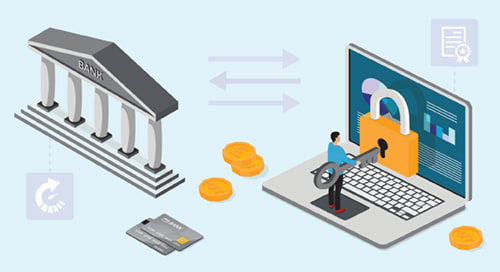Ensure financial compliance, speed integration, and improve customer experience with Amplify Open Banking
Amplify Open Banking helps address the complexities of open banking regulations and supports financial institutions as they integrate their services into digital ecosystems. Eliminate screen scraping, stay continuously compliant, and quickly deploy new services with a low-code/no-code solution to remain agile in today's competitive market.
-
 Read Now
Read Now5 key plays to design a proactive open banking strategy
Learn how leading financial organizations build revenue and improve customer retention through strategic open banking integration beyond regulatory compliance.
-
Enhancing customer control of financial data: Regions Bank selects Axway to accelerate open banking services
Learn More -
Amplify Open Banking demo - See it in action!
Register Now -
 Read Now
Read NowClear for takeoff? Make sure your open banking passes security first.
Before sensitive data travels between your bank and third-party providers, it needs a thorough screening.
-
 1:36Watch Video
1:36Watch VideoIntroducing Amplify Open Banking
Simplify compliance, strengthen security, and drive innovation with Amplify Open Banking.
-
Open Banking Regulations: Check the box OR competitive advantage?
Watch On-Demand -
 Read Now
Read NowOpen banking in Canada. The what, why, who, when, and how.
Ensuring secure financial data sharing and financial consumer control through Consumer Driven Banking Act in Canada with Axway Open Banking
-
 3:40Watch Video
3:40Watch VideoKickstart Your Open Banking Journey with Axway’s Amplify Solution
Ready to accelerate your Open Banking strategy? Learn more about Amplify Open Banking by Axway. Discover how Axway is helping financial institutions like banks and credit unions modernize their data
-
 Read Now
Read Now5 frequently asked questions about open banking
Get answers to the top 5 open banking questions, from security and compliance to API adoption. Learn how banks can navigate regulations and drive growth in 2025.
-
 Read Now
Read NowAn introduction to Amplify Open Banking
Ensure open banking compliance, integration, customer trust
-
 Read Now
Read NowAxway Amplify Open Banking. Create customer experiences that make you more competitive.
Discover the entry point for financial institutions looking to implement their open banking and open finance ecosystems
-
 Read Now
Read NowAmplify Open Banking: the mechanics of financial service innovation
Implement open banking services with Amplify Open Banking components and processes to comply with regulations and meet consumer demands
-
 Read Now
Read NowOpen banking: Compliance and beyond
Master open banking with compliance, integration, customer trust
-
Have questions? Get in touch with an Axway open banking expert.
Contact Us -
 10:13Watch Video
10:13Watch VideoDemo | Axway Amplify Open Banking
Accelerate your open banking strategy and rise to the evolving challenges of regulatory compliance, consumer trust, and operational efficiency with Axway Amplify Open Banking
-
 Read Now
Read Now5 ways to drive financial service value with Amplify Open Banking
Master open banking with compliance, integration, customer trust
-
 Read Now
Read Now6 ways to accelerate your open banking strategy
Master open banking with compliance, integration, customer trust
-
 Read Article
Read ArticleSecurely participate – and thrive – on the open banking marketplace
The CFPB’s announcement of its final U.S. open banking rule (alongside similar rules in Canada) is certainly an important factor in banks’ adoption of API technologies. However, in North America,...
-
 Read Article
Read ArticleDodd-Frank Section 1033: act now on the CFPB proposed rule for open banking
On October 19, 2023, the Consumer Financial Protection Bureau (CFPB) announced the release of a proposed rule requiring U.S. financial firms such as banks and credit unions that offer transaction...
-
Loading More...


